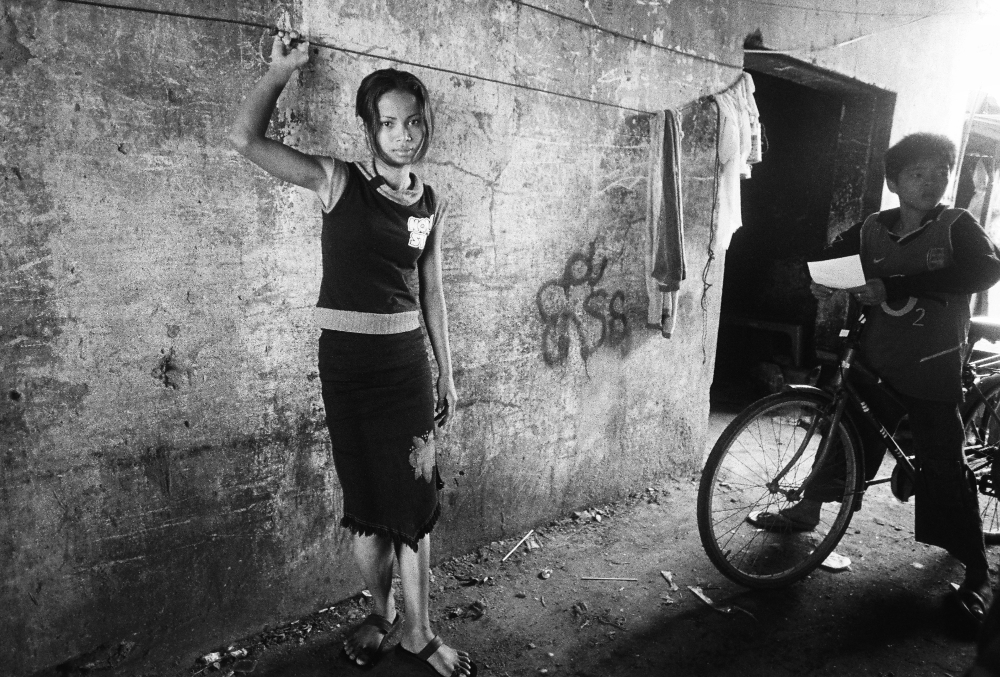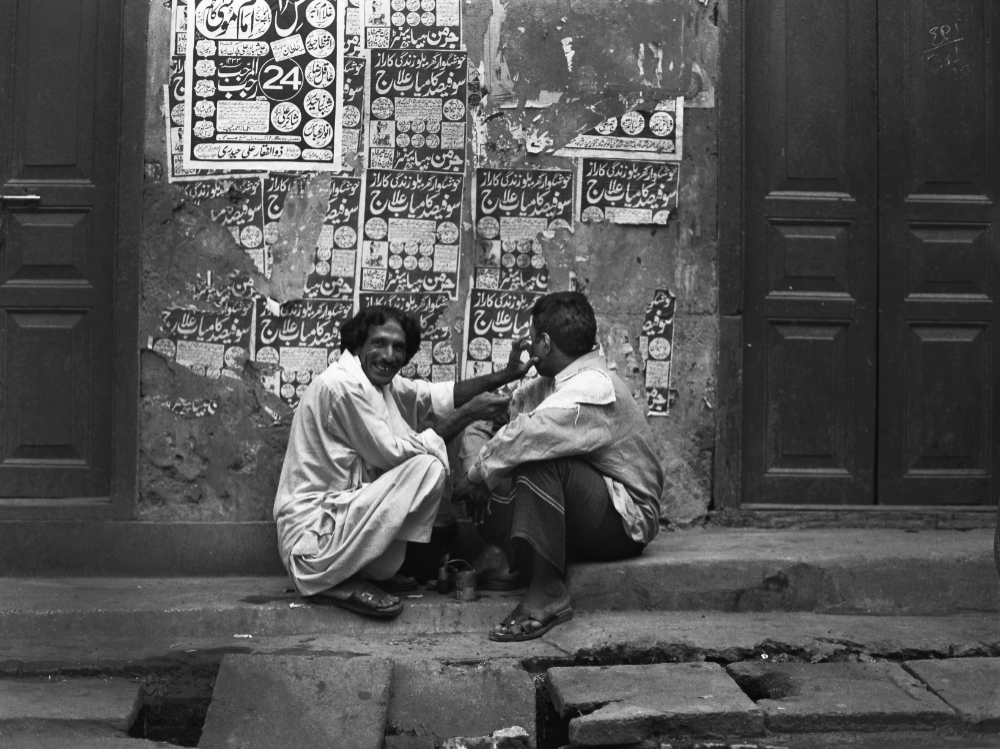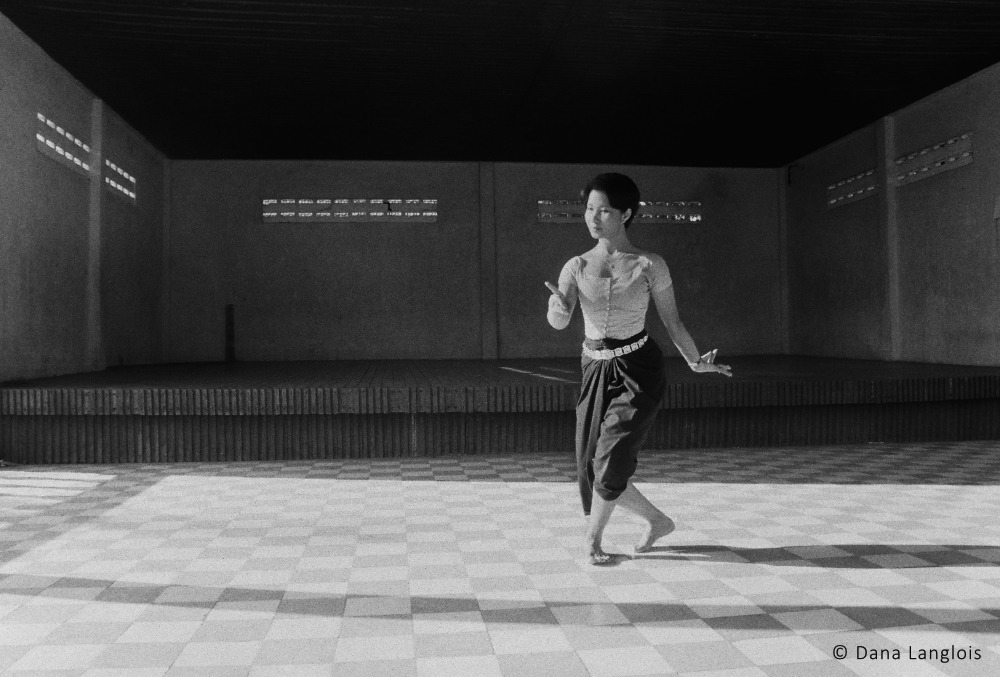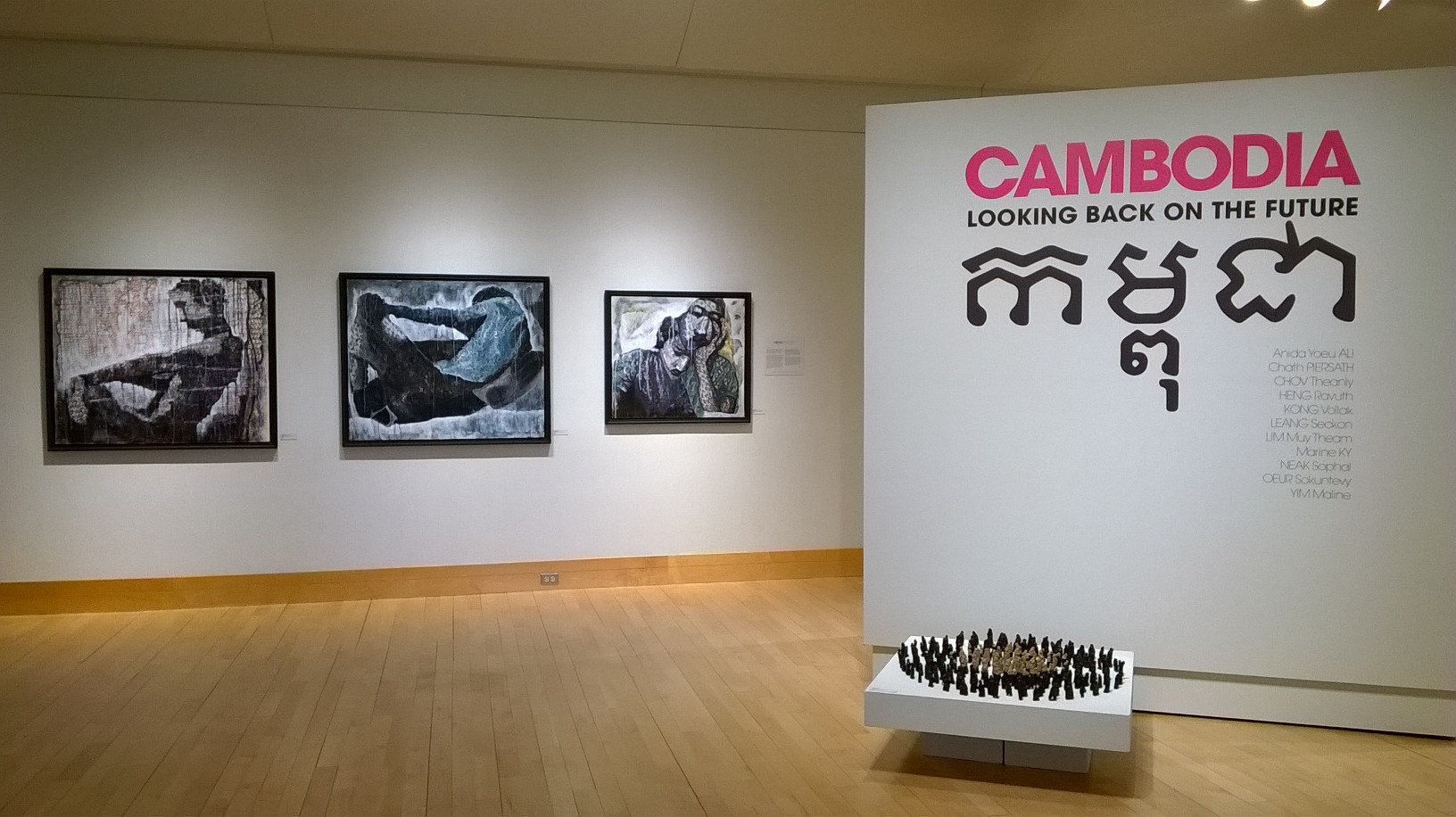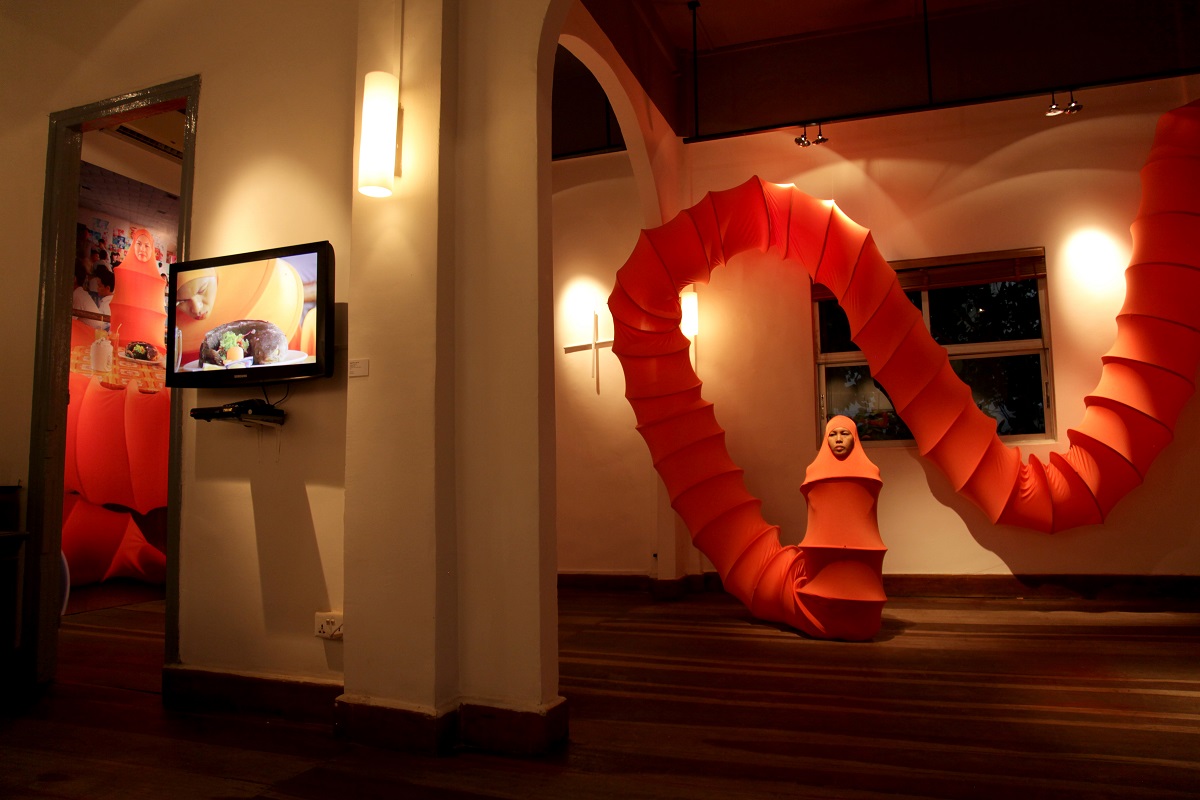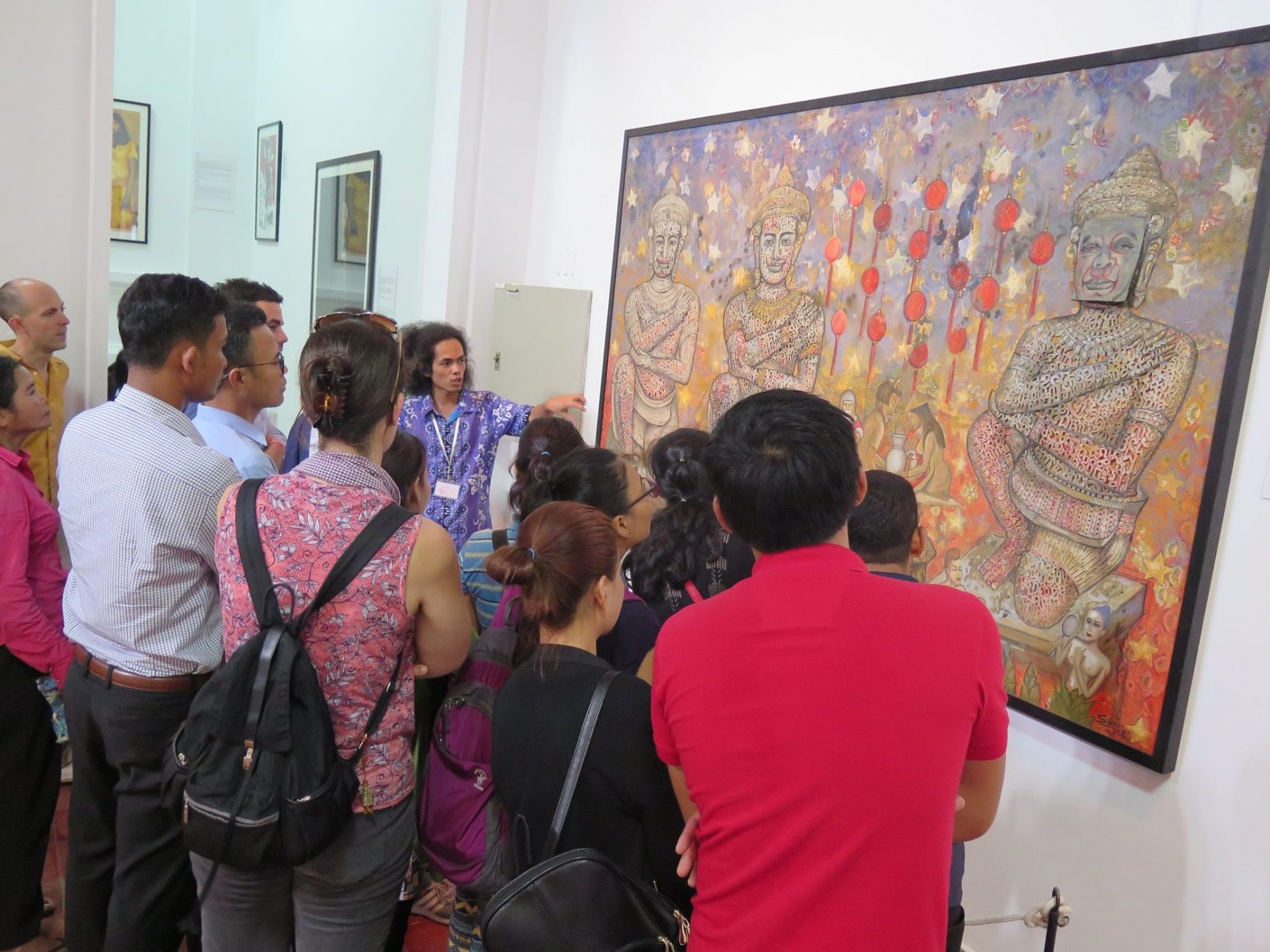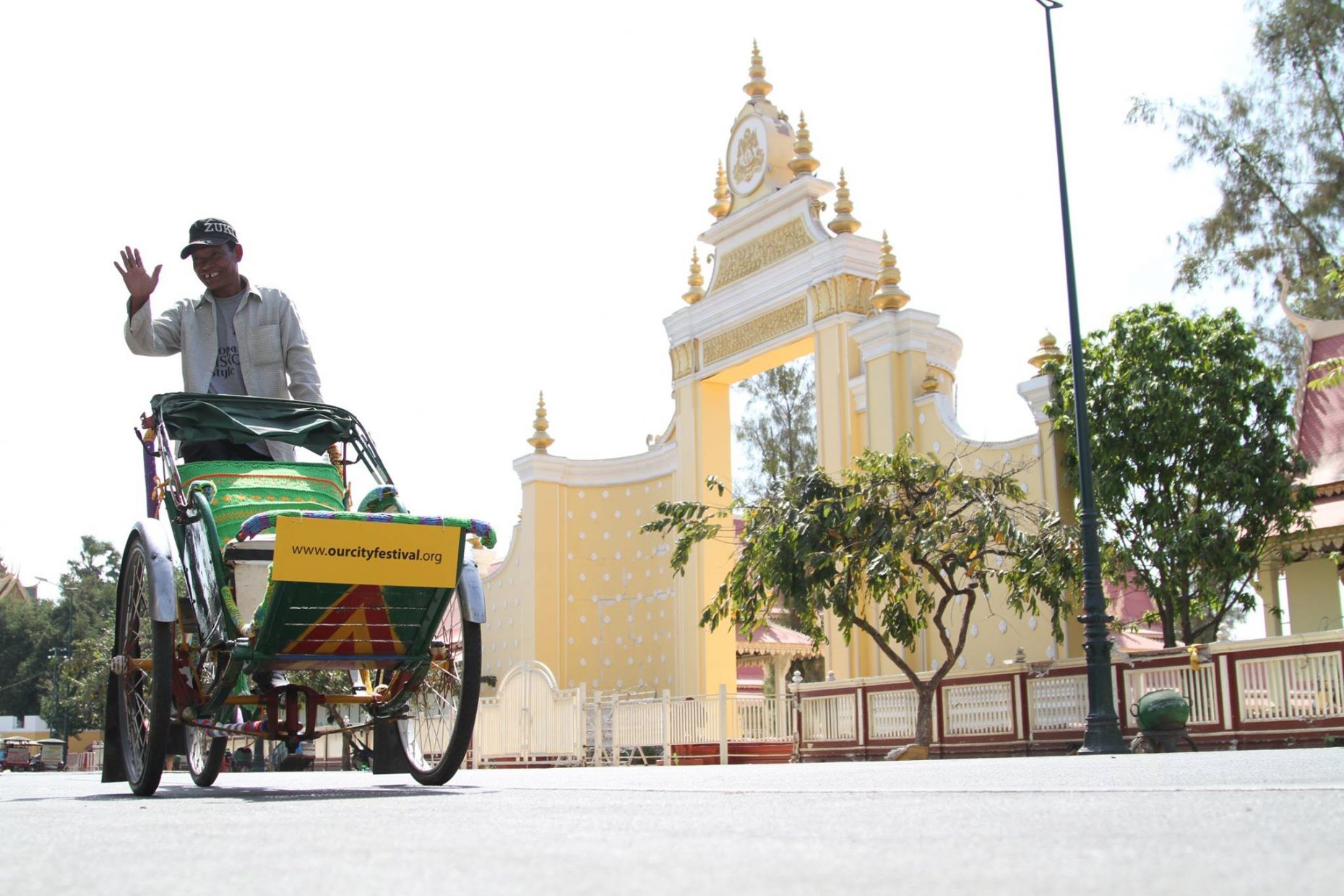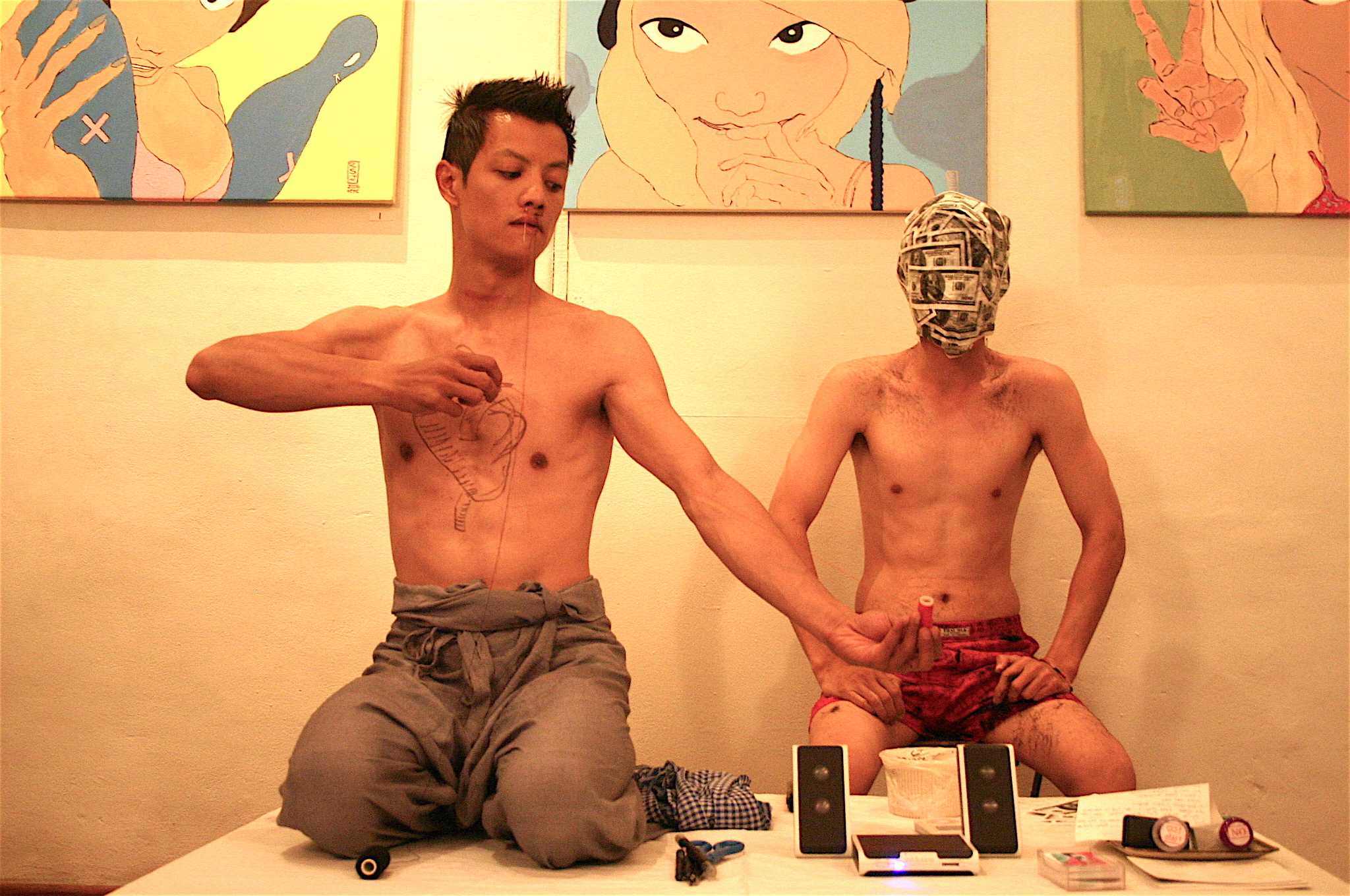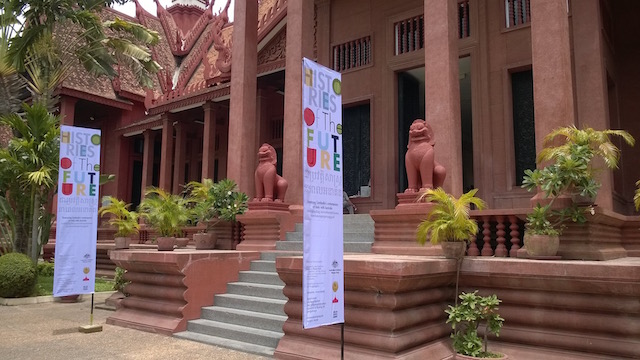Histories of the Future: Showcasing Cambodia’s contemporary art links with Australia and the National Museum of Cambodia
July 1 – October 16, 2016
National Museum of Cambodia, Phnom Penh, Cambodia
Curator: Dana Langlois
Assistant: Yean Reaksmey
Sponsored by the Australian Embassy in Phnom Penh in cooperation with the Ministry of Culture and Fine Arts and the National Museum
Histories of the Future was a groundbreaking exhibition that placed some of Cambodia’s most prominent contemporary artists in the National Museum of Cambodia. Sponsored by the Australian Embassy in Phnom Penh, all the works in the exhibition have in some way been supported by Australian art institutions. It was intended to celebrate the engagement between Australia and Cambodia through art and culture. In doing so it offered the unique opportunity to bring together contemporary Cambodian artworks in one exhibition, to be presented in a well-recognized Cambodian institution, which Australian Aid helped restore.
The exhibition featured the work of eighteen artists, many of whom are well known in the international art scene. They include: Anida Yoeu ALI, KHVAY Samnang, KIM Hak, KONG Vollak, Marine KY, LEANG Seckon, LIM Sokchanlina, MEAS Sokhorn, NEAK Sophal, NEANG Kavich, PICH Sopheap, Amy Lee SANFORD, SREY Bandaul, SVAY Ken and SVAY Sareth. Notably, there are three Australians included in the exhibition for their work and collaboration on two of the featured projects: Philippa KELLY, Jorng Jam, and Keith DEVERELL and Sue MCCAULEY, The Hawker’s Song.
Talk Series:
3 July 2016
Vuth Lyno: Facilitating the Contemporary: Artist Initiatives in Phnom Penh since 1990s
10 July 2016
Darryl Collins: From Palace Workshops to International Exhibitions: New Nagas Rising
17 July 2016
Roger Nelson: Overlapping Relationships in 1960s Cambodian “Modern Painting”: Nhek Dim, Sam Yoeun, Australia, the United States, East Germany
16 September 2016
Constructing an Artistic Vocabulary
With artists Anida Yoeu Ali and Leang Seckon
5 October 2016
The Art of Storytelling
With artists from the Jorng Jam project: Kong Vollak, Neak Sophal, Kim Hak and Neang Kavich
8 October 2016
Made by Hand
With artists Pich Sopheap and Marine Ky
10 October 2016
Performing Video
With Lim Sokchanlina, Khvay Samnang and Meas Sokhorn
Exhibition Statement:
Histories of the Future highlights the importance of contemporary art for a living culture while celebrating artistic exchanges between Australia and Cambodia. The multidisciplinary exhibition features the works of eighteen artists that engage with social, spiritual, cultural and economic tensions as Cambodia emerged from a century of conflicts. The juxtaposition of recent history and ancient past in a museum of antiquities provides a unique lens to view this exhibition of intersecting themes.
The connections between history, tradition, as well as modern cultural expressions is stated elegantly by Vann Molyvann, a revered architect and intellectual, who wrote in 1966,
“Fifteen centuries of artistic activities have given Cambodia an important place in the History of World Art. Now, after a long period of inactivity, present day Cambodia needs to associate itself once again with this great tradition, renew it and direct it towards modern methods in order to inspire a new vigour and enthusiasm in contemporary Cambodian art.”
Molyvann, Vann “The Royal University of Fine Arts” from Kambuja Sorya, August 1966. Reprinted in Ly Daravuth and Ingrid Muan (Eds.), Cultures of Independence. Phnom Penh, Cambodia: Reyum Publishing, 2001.
Cambodia’s rich history of art and culture is largely preserved by the National Museum, which is dedicated to the preservation of antiquities, research and promoting knowledge and understanding of Cambodia’s cultural heritage. With almost 15,000 objects stored and displayed on site, it holds the largest collection of Khmer cultural artifacts. It is in this context that an exhibition of contemporary Cambodian art becomes especially significant.
While the museum is dedicated to the historization of Cambodia’s pre-modern culture, the current exhibition calls attention to ideas and expressions of living artists. The title Histories of the Future playfully suggests that the artworks may one day form part of Cambodia’s cultural history. It envisions a future when a Cambodian art museum might house today’s works of art as historical artifacts. By compressing divergent timelines under one roof, the exhibition serves as a catalyst to continue the tradition of patronage and to reflect on aesthetics, culture, and society in Cambodia.
In selecting the artworks for this exhibition, the requirement was that each work has in some way been supported, commissioned or acquired by an Australian institution or a government program. In some cases it is not the exact same work but it is related. Beyond this initial premise, certain themes emerged from these individual and collaborative works of art. The following examples serve as signposts for the exhibition and illustrate these themes.
A recurring motif is the way many artists draw on autobiography to explore the complexities of memory, identity and recent history. For example, in Cambodian-American Amy Lee Sanford’s video entitled Cascade, her hands are visible as she patiently puts together a puzzle of small blocks that when completed, forms the image of a handwritten letter. This letter is one of hundreds of letters written by her Cambodian father to his American wife during the years immediately prior to perishing in the genocidal regime of the Khmer Rouge. Sanford’s ongoing practice involves methodically applying different methods of dissection and restoration of personal artifacts in order to interrogate the emotional landscape of loss and healing.
In other works of art in the exhibition, spirituality and cultural legacy come to the fore. Kneeling and Watching the Festivities, a new work by Leang Seckon, shows three large figures of ancient statues cut from traditional leather puppets and sewn to a canvas made of “sarong” materials. These three figures are amongst recently repatriated statues, many of which were looted from the country during decades of war. In this work, Leang reimagined these cultural icons as refugees returning to their homeland. He further complicates the image with modern references and recent history, thus altering the perception of what these iconic figures may mean today.
Finally, another important theme is the physical and social changes brought about by urban development. The collaborative project The Hawker’s Song, created by Keith Deverell and Sue McCauley from Australia with Meas Sokorn and Srey Bandol from Cambodia, pays tribute to small street traders who sang songs to attract customers. Urbanization results in many of traditions that may have rural origins being displaced by modern counterparts. The installation combines different video documentation of singing hawkers and performative actions, forming a poetic narrative that calls attention to the plight of modernization.
Serving as a backdrop to this exhibition is over a decade of fruitful artistic and curatorial exchanges between Australia and Cambodia. Notably, the Queensland Art Gallery in Brisbane has a very active role in the research and representation of contemporary art from Cambodia through the Asia Pacific Triennial (APT), a leading art event for the region. Pich Sopheap, Svay Ken, Vandy Rattana and Rithy Panh were featured for APT6 in 2009/2010 and recently Anida Yoeu Ali, Leang Seckon and Khvay Samnang are highlighted at APT8 2015/2016. Recently, the National Gallery of Victoria commissioned and acquired a large sculpture by Svay Sareth to include in their international collection of contemporary art. AsiaLink, Melbourne International Arts Festival, Darwin Festival and Ozasia have featured and supported projects by Cambodian artists to be included in their programming. In addition to these collections and festivals, Monash University and Australian National University hold important archives of both historical and artistic materials from Cambodia.
The collaborative exchange between Australia and Cambodia has provided an opportunity to celebrate Cambodia’s living culture and as a result has opened the possibilities of a dynamic future history.
Histories of the Future was made possible thanks to the generous support of the Australian Embassy of Cambodia in cooperation with the Ministry of Culture and Fine Arts and the National Museum of Cambodia. Additional support provided by Melon Rouge as well as contributions from Cambodian Living Arts, JavaArts and Sa Sa Bassac.


